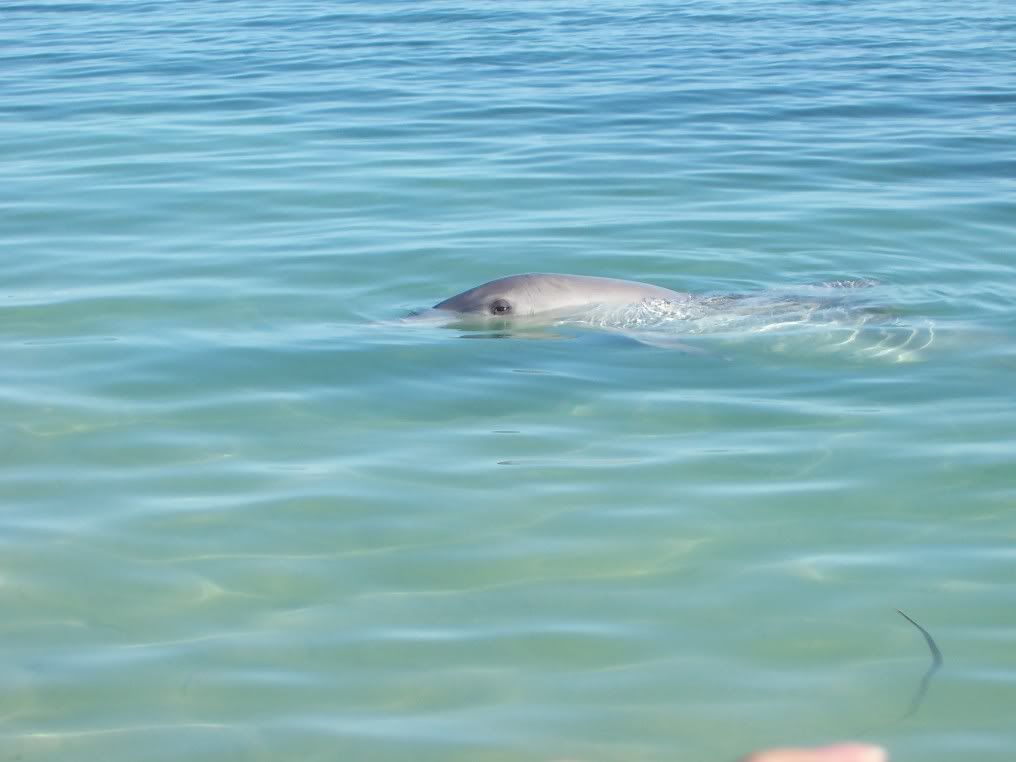Dolphin checking out the crowd at Monkey Mia
Another dawn start today, but a chance to get as close to wild animals as you can get without jumping in the water. We saw a few native species on the trip - kangaroos (two of them boxing), a wombat, emus, wedge-tailed eagles, whales (more on that later), and dolphins. Just east of our second overnight stay at Denham is a place called Monkey Mia. 'Mia' means 'place of' in the local aboriginal language, and the Monkey was an early trading vessel that anchored in Shark Bay. For years a group of local dolphins have arrived at the beach each morning and are quite happy to swim in knee-deep shallows looking at tourists. They are fed - but carefully and are only given 5% of their daily needs so they don't become reliant. I'm not sure about that, but it was incredible to stand there and be a metre away from wild dolphins swimming around. You got the impression they were amused by it too - every so often they raised an eye out of the water and had an inquisitive peek. Of course, it's really popular, and there were about 100 people in a long line on the shore - but the dolphins don't seem to mind. You can't go any closer though, and touching isn't allowed - apparently human viruses are lethal to them.
After that we had a choice - go on a catamaran in the bay, or go for a nature walk with an aboriginal guide. Now I've been on plenty of boats - but have never talked to an aboriginie, so I chose that. It turned out that I was the only one - so I had a private tour of the bush for a couple of hours. The guide was called Capes, and was a member of the local Malgana people. I've lived in Australia for almost a year and done nothing aboriginal, so I was interested to hear what he had to say. We walked around, and he showed me tracks of the various animals and birds in the dark red sand. He talked about the influence of nature on their way of life - it's everything to them - and their outlook on how to conserve it. He explained how they catch goannas to eat - they listen for alarm calls of bush wrens, and use them as a guide for where the lizards are likely to be. He was pretty good at bird impressions, he did an alarm call and all the wrens flew up to check out the danger. It was all interesting, he picked a few native beans for me to eat - they tasted disappointingly beany. We saw loads of lizards and birds, but no mammals or snakes. He knew a heck of a lot though, and told me that schoolchildren in the Denham area are now learning aboriginal language in their school - even the white children. Oh, and that his tribe call ants 'mingers'.